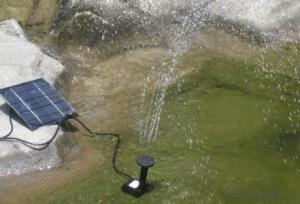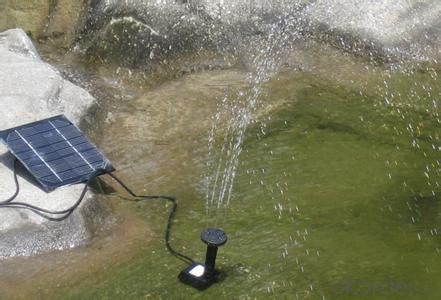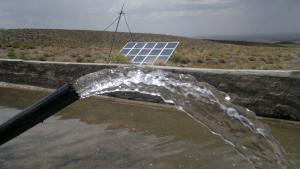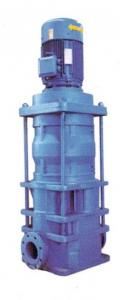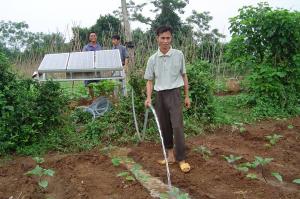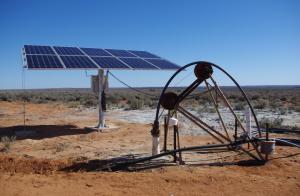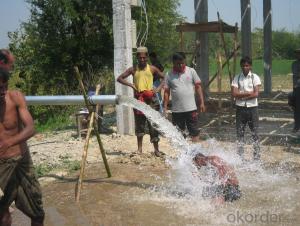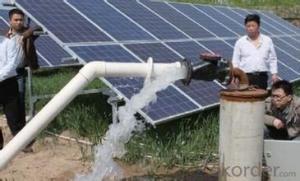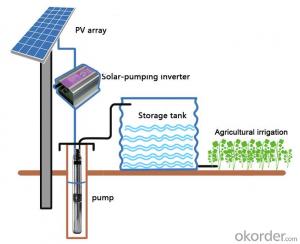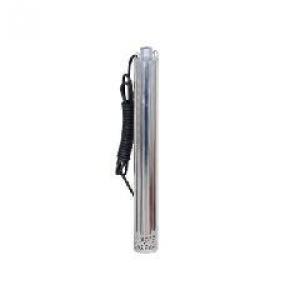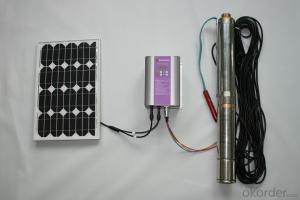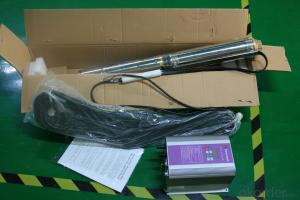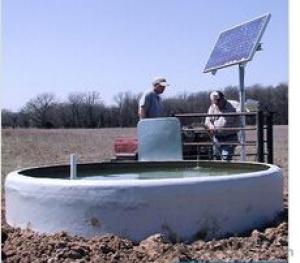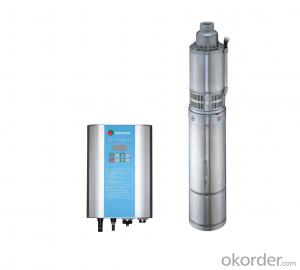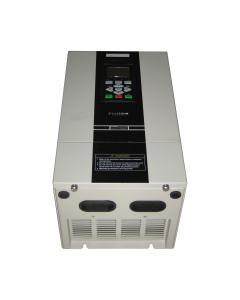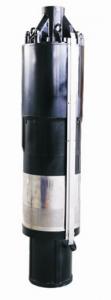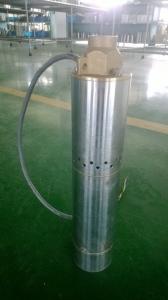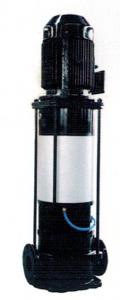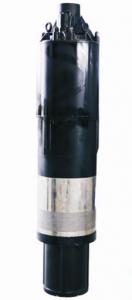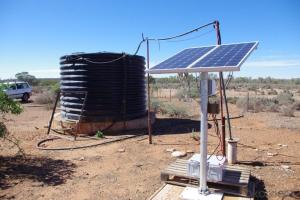AC/DC Hybrid Solar Pumping System
- Loading Port:
- China Main Port
- Payment Terms:
- TT OR LC
- Min Order Qty:
- -
- Supply Capability:
- -
OKorder Service Pledge
OKorder Financial Service
You Might Also Like
Specifications
1.solar pond pump
2.Operate direct sunlight
3.Water lift Max: 2.0m
4.DC pump
5.CE&ROHS
Solar pond pump
Item Description :
This superb new addition to our solar fountain range comes with a 10w solar panel,and a powerful fountain pump that is capable of producing fountains of up to 2m in height. As well as being easy to set up and use.Instruction manual is supplied for assembly and maintenance.
Solar Fountain Key Features :
Powered by direct sunlight
No high voltage electric mains required
Safe for children
Max. height of fountain: 2M
Max. flow capacity: 800 L/H(176 GAL)
10W Polycrystalline solar panel included
18V DC brushless pump
Solar Pump Features :
Can produce fountains up to : 2M (tube height) 1.4M (fountain height)
Comes with multiple nozzle accessories
Cable Length : 5M
Solar Panel Features :
10W peak power.
Polycrystalline highly efficient solar panel
Comes mounted in aluminium frame
Comes with ground stake and rotating knob so you can angle your panel toward the sun
What You Will Get :
10W solar panel
Solar pump
Ground Sake
Nozzle accessories
Precautions :
DO NOT alter or change the product itself or its components
Operate pump in freshwater only, never above 50 degrees celsius
Keep away from flammable liquids
Do not connect to any other power supply other than the included
Product data:
| Item No: | P009A solar pond pump |
| Include: | Solar Panel |
| DC Brushless Pump with 5m Cable | |
| Aluminium Frame with plastic spike set | |
| Function: | Operate Direct Sunlight |
| Feature: | Water lift Max: 2.0m |
| Water flow Max: 800L/H(176gal/hour) | |
| Export Carton: | 5pcs/CTN |
| 20'; 40'; | 2590pcs;5370pcs; |
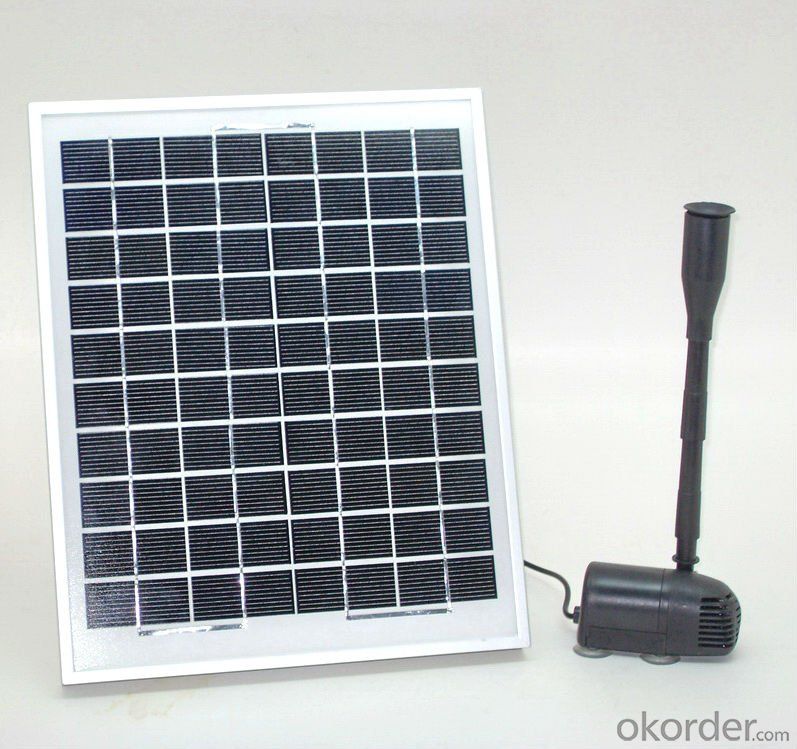
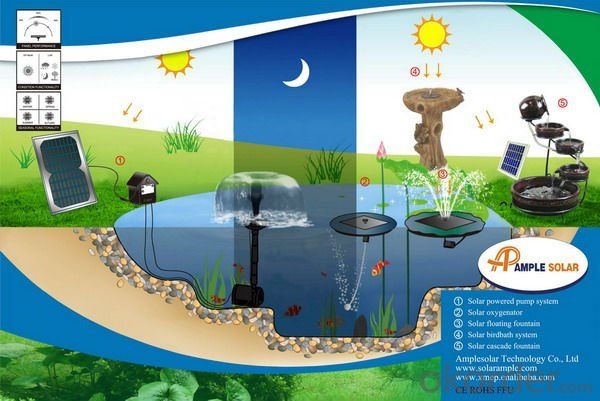
- Q: Can a solar pump be used in areas with limited access to replacement parts?
- Yes, a solar pump can be used in areas with limited access to replacement parts. Solar pumps are designed to be reliable and durable, requiring minimal maintenance and repair. They have fewer moving parts compared to conventional pumps, making them less prone to breakdowns. Additionally, solar pumps often come with warranties and are built to withstand harsh conditions, ensuring their longevity even in areas with limited access to replacement parts. Overall, the simplicity and robustness of solar pump technology make them a suitable solution for areas with limited access to replacement parts.
- Q: Can solar pumps be used for water supply in beach resorts or tourist destinations?
- Yes, solar pumps can be used for water supply in beach resorts or tourist destinations. Solar pumps are an environmentally friendly and cost-effective solution to provide water for various purposes, including drinking, bathing, and irrigation. They can harness solar energy to pump water from wells, rivers, or lakes, eliminating the need for traditional electricity sources. This makes them ideal for remote locations like beach resorts or tourist destinations where access to electricity might be limited. Additionally, solar pumps require minimal maintenance and have a long lifespan, making them a reliable and sustainable choice for water supply in such locations.
- Q: Are there any limitations to the flow rate of water a solar pump can handle?
- Yes, there are limitations to the flow rate of water that a solar pump can handle. The flow rate of a solar pump is usually determined by the size and capacity of the pump, as well as the amount of sunlight available to power the pump. The size and capacity of the pump will determine its maximum flow rate. If the pump is too small or has a limited capacity, it may not be able to handle high flow rates of water. In such cases, the pump may struggle to deliver water efficiently or may even fail to pump water at all. Additionally, the amount of sunlight available to power the solar pump can also impact its flow rate. Solar pumps rely on solar panels to convert sunlight into electricity, which is then used to power the pump. If there is insufficient sunlight or if the solar panels are not properly positioned or maintained, the pump may not receive enough power to operate at its maximum flow rate. It is also worth noting that the flow rate of a solar pump may vary depending on the time of day and weather conditions. For example, during cloudy days or in the early morning or late afternoon when the sun is less intense, the flow rate may be reduced. Therefore, while solar pumps are a sustainable and eco-friendly solution for water pumping, they do have limitations in terms of flow rate. It is important to carefully consider the size and capacity of the pump and ensure proper maintenance of the solar panels to optimize the flow rate of water.
- Q: How does a solar pump handle water with high mineral content?
- A solar pump can handle water with high mineral content by using a filtration system. The pump first draws water from the source and passes it through a filtration unit that removes impurities and minerals. This process ensures that the water pumped by the solar pump is free from any harmful minerals, making it safe for various applications such as irrigation or drinking.
- Q: Are solar pumps suitable for use in botanical gardens?
- Yes, solar pumps are suitable for use in botanical gardens. They provide a sustainable source of energy and can efficiently power water features, irrigation systems, and fountains in botanical gardens, ensuring the plants receive the necessary water and maintaining an environmentally-friendly approach.
- Q: Are there any certifications or standards for solar pumps?
- Yes, there are certifications and standards for solar pumps. One widely recognized certification is the International Electrotechnical Commission (IEC) 62109 standard, which evaluates the safety and performance aspects of solar inverters and related equipment, including solar pumps. Additionally, various other certifications and standards, such as ISO 9001 for quality management and ISO 14001 for environmental management, may also apply to solar pumps. It is important to ensure that solar pumps meet these certifications and standards to ensure their reliability, safety, and compliance with industry requirements.
- Q: Can solar pumps be used for dewatering or flood control?
- Yes, solar pumps can be used for dewatering or flood control. These pumps utilize solar energy to power their operation, making them an environmentally friendly option for managing water levels during dewatering or flood situations. They can be used to drain water from flooded areas or control water levels in ditches, ponds, or other water bodies, providing an effective and sustainable solution for flood control and dewatering purposes.
- Q: How does the size of the storage tank affect the performance of a solar pump?
- The size of the storage tank can affect the performance of a solar pump in a few ways. Firstly, a larger storage tank allows for more water to be stored, which means the solar pump can operate for longer periods of time without needing to draw water from other sources. This can be especially beneficial in areas with limited water resources or inconsistent sunlight. Additionally, a larger storage tank can help regulate the water pressure and flow rate. When the tank is smaller, the pump may need to operate at a higher speed to maintain the desired pressure, which can lead to increased wear and tear on the pump over time. A larger tank allows for a more steady flow of water, reducing strain on the pump and potentially extending its lifespan. Furthermore, the size of the storage tank can impact the overall efficiency of the system. A larger tank can better accommodate the fluctuations in solar energy availability, as excess energy can be stored during peak sunlight hours and used later when sunlight is less abundant. This ensures a more consistent and reliable water supply, improving the overall performance of the solar pump.
- Q: Can a solar pump be used for water supply in commercial buildings or complexes?
- Yes, a solar pump can be used for water supply in commercial buildings or complexes. Solar pumps are commonly used for various applications including irrigation, livestock watering, and domestic water supply. They are a sustainable and cost-effective solution, as they utilize solar energy to power the pump, reducing dependency on conventional electricity sources. With advancements in technology, solar pumps can provide sufficient water supply for the requirements of commercial buildings or complexes, making them a viable option for sustainable water management.
- Q: Are there any noise restrictions for installing a solar pump in residential areas?
- Noise restrictions may apply when installing a solar pump in residential areas. The precise limitations can differ based on the regulations and guidelines established by the municipality or homeowners' association. These restrictions aim to maintain the tranquility of the residential neighborhood by preventing any disturbance caused by the noise generated by the solar pump. It is recommended to consult local authorities or relevant governing bodies to ascertain the specific noise restrictions that must be adhered to when installing a solar pump in a residential area.
Send your message to us
AC/DC Hybrid Solar Pumping System
- Loading Port:
- China Main Port
- Payment Terms:
- TT OR LC
- Min Order Qty:
- -
- Supply Capability:
- -
OKorder Service Pledge
OKorder Financial Service
Similar products
Hot products
Hot Searches
Related keywords
